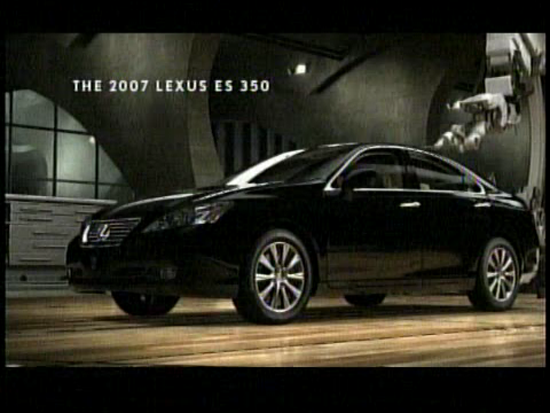TV Tuner Comparisons
How does the NVIDIA DualTV MCE compare with the ATI Theater 550 Pro and All-In-Wonder series of cards? We'll start with power consumption, and we tested each of the three cards at three different states: while the system is idle, while watching live TV, and while recording live TV. Here are the results.| System Power Draw | |||
| Idle | Watching TV | Recording TV | |
| NVIDIA DualTV MCE | 162 | 179 | 189 |
| ATI MSI Theater 550 Pro | 159 | 170 | 175 |
| ATI X1800 AIW | 154 | 172 | 172 |
For reference, the power draw of the system without a TV tuner card installed (excluding the AIW) is 145 Watts. We used an X1800 GTO for the main graphics card with the DualTV and Theater 550 cards, in order to keep the power draws as close as possible to that of the AIW card. We can see from the table that the Theater 550 and AIW draw less power than the DualTV while watching and recording live TV, which makes sense given the DualTV's ability to record two sources as opposed to the other cards' one.
Something else we're interested in looking at is channel switching speed between these three cards, as this is something that can vary between different TV tuner cards. The type of tuner on the card can affect this, and all three of these cards use silicone tuners, which can be slower than analog ones, but take up less space on the board. Interestingly, we found that the AIW had the fastest channel switch time at about one second. The Theater 550 had the slowest channel switch time at about three seconds, and the DualTV MCE was slightly faster than the Theater 550 at about 2 and a half seconds. While three seconds doesn't sound like a very long time at all, it can be a very annoying delay if you like channel surfing.
Between these three TV Tuners, there are some major differences aside from power and channel switching speed. Of course the AIW is a much different solution than the other two in that it is a complete 3D graphics card with a built-in TV tuner. The DualTV and Theater 550 are stand alone TV tuners meant to operate alongside a separate graphics card. Having a graphics card and TV Tuner combined can be good or bad, depending on the personal preference. Some people would rather have the freedom of being able to switch graphics cards while keeping the same TV tuner, while others may prefer the combination of the two in order to keep the extra PCI/PCI-E slot open.
Note that the Theater 550 is available in both PCI and PCI-E X1 versions; at present, it is the only PCI-E TV tuner on the market. Also, the X1800 AIW is a very large part and wouldn't fit very well in a compact system, though to be fair ATI offers AIW cards in a wide range of performance and size. One more thing to note about the AIW cards is that they don't have MPEG-2 encoding in hardware, which means they won't work with Windows MCE. The Theater 550 Pro and NVIDIA DualTV include this feature and work fine with MCE 2005.
The Theater 550 Pro is much more similar to the DualTV MCE, with the major difference being the ability to only record one source as opposed to the DualTV's two. Coupled with Windows MCE, the DualTV's capabilities and ease-of-use outweigh those offered by the Theater 550 Pro and it's included PowerCinema 3 (or 4, depending on which T550 card you purchase) software, but the fact that the DualTV MCE doesn't include any other software is a problem.
Below are some screenshot captures of each of these cards' live video for image quality comparison.
NVIDIA DualTV


ATI Theater 550 Pro


ATI X1800 AIW


We can see that there doesn't seem to be much difference between the quality of the DualTV MCE and the Theater 550 Pro, but with the AIW, the image looks a little sharper than the others. This is especially noticeable in the writing on two of the images. Overall though, the differences aren't that great and all of these cards provide good quality video with live TV. Unfortunately, HDTV isn't supported for any of you that want that feature, but of course the number of HD broadcasts and channels is still significantly lower than the number of standard analog channels.
A simple screenshot doesn't always convey quality as well as a video, so we have also created a BitTorrent share with video samples from the three cards. Download the torrent file, and then use your favorite BitTorrent client. Total size of the videos files is 22.3MB. Note that we have the original MCE generated file for the DualTV as well as a high quality re-encode to standard MPEG-2. (The DVR-MS extension doesn't work with all video players, but it works with WMP10.)










68 Comments
View All Comments
SilkySmooth - Friday, May 19, 2006 - link
That has to be one of the worst AT reviews I have ever read. It shows a total lack of understanding of what the HTPC audience looks for in a TV tuner card. As other posters have mentioned even a basic side by side image comparison is missing not to mention encoding, audio, cpu utilization.Woodchuck2000 - Friday, May 19, 2006 - link
One completely different screenshot per tuner does not an IQ comparison make.What about the cards' de-interlacing quality? What about CPU utilisation? It looks sufficiently like someone at nVidia said "We've got this new card, can you knock up a quick article to publicise it?"
Pandamonium - Friday, May 19, 2006 - link
I didn't read the whole article, so I might have missed an explanation.Either way, how on earth could AT publish a review of an MCE-certified TV tuner without including anything from Hauppauge's product line? The PVR-150MCE and 500MCE's are pretty standard fare as far as the HTPC community is concerned. AT really ought to consider republishing this article with that in mind.
JarredWalton - Friday, May 19, 2006 - link
See last page. PVR-350 is mentioned as one of the few other good dual-tuner cards. PVR-500 is about the same, AFAIK, though the drivers are at present apparently iffy. (The beta drivers are basically required.)GoatMonkey - Friday, May 19, 2006 - link
I'm using a Hauppauge 500 MCE with Beyond TV, and have no need for any beta drivers. The thing works perfectly.Tegeril - Friday, May 19, 2006 - link
It's clear that you have never used a MCE system with Hauppauge's cards and neither has anyone that was involved in the writing of this article. I've got a 350, yes it is a single tuner, the 500 is dual, and the system was constructed over a year ago and the drivers I'm using have not needed updating, I find it very difficult to believe that the drivers haven't changed in that time, and no, I'm not even using beta drivers now.mindless1 - Saturday, May 20, 2006 - link
Umm, so unlike every other bit of hardware on earth, you are presuming that with your specific card, if one person on earth has a driver version working ok, then it is golden for everyone? I don't think so.GoatMonkey - Monday, May 22, 2006 - link
Here's the latest driver...http://www.hauppauge.com/pages/support/support_mce...">http://www.hauppauge.com/pages/support/support_mce...
The driver is not a beta.
There is a beta of the radio software for windows media center edition. But media center edition sucks so, it doesn't matter.
Why should we assume that because some random guy says you have to use beta drivers that it is correct?
dstaaf - Friday, May 19, 2006 - link
The http://www.hauppauge.com/pages/products/data_pvr35...">PVR-350 is a single-tuner card.fanbanlo - Friday, May 19, 2006 - link
I expected a lot more from AnandTech on this review...no screenshot / side-by-side comparison?
no CPU Utilization graph??
no audio comparison?
no MediaSqueeze review?